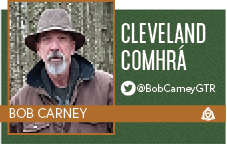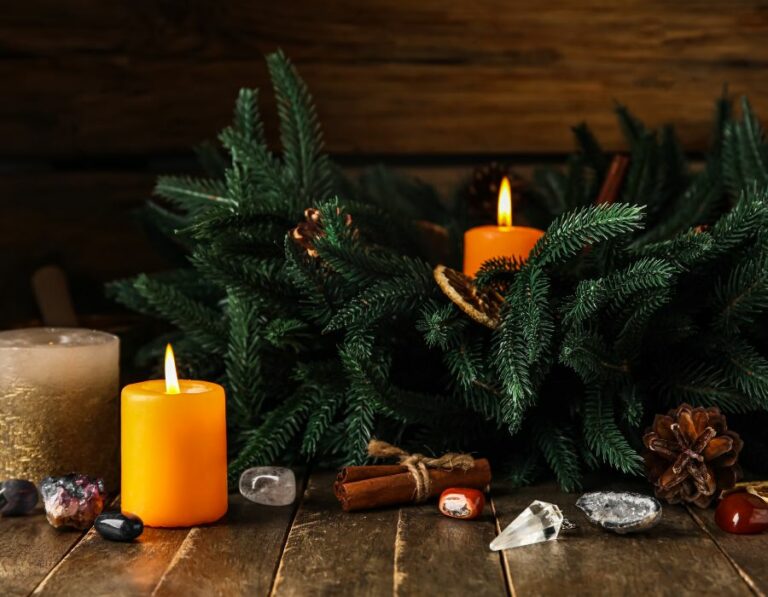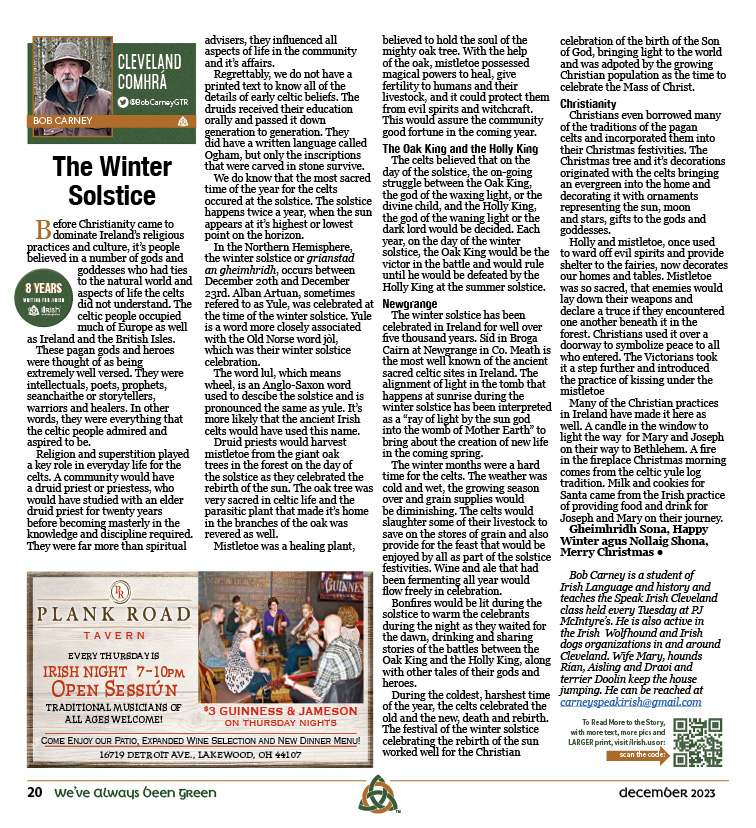

By Bob Carney
Before Christianity came to dominate Ireland’s religious practices and culture, it’s people believed in a number of gods and goddesses who had ties to the natural world and aspects of life the celts did not understand. The celtic people occupied much of Europe as well as Ireland and the British Isles.
These pagan gods and heroes were thought of as being extremely well versed. They were intellectuals, poets, prophets, seanchaithe or storytellers, warriors and healers. In other words, they were everything that the celtic people admired and aspired to be.
Religion and superstition played a key role in everyday life for the celts. A community would have a druid priest or priestess, who would have studied with an elder druid priest for twenty years before becoming masterly in the knowledge and discipline required. They were far more than spiritual advisers, they influenced all aspects of life in the community and it’s affairs.
Regrettably, we do not have a printed text to know all of the details of early celtic beliefs. The druids received their education orally and passed it down generation to generation. They did have a written language called Ogham, but only the inscriptions that were carved in stone survive.
We do know that the most sacred time of the year for the celts occured at the solstice. The solstice happens twice a year, when the sun appears at it’s highest or lowest point on the horizon.
In the Northern Hemisphere, the winter solstice or grianstad an gheimhridh, occurs between December 20th and December 23rd. Alban Artuan, sometimes refered to as Yule, was celebrated at the time of the winter solstice.
Yule is a word more closely associated with the Old Norse word jòl, which was their winter solstice celebration. The word lul, which means wheel, is an Anglo-Saxon word used to descibe the solstice and is pronounced the same as yule. It’s more likely that the ancient Irish celts would have used this name.
Druid priests would harvest mistletoe from the giant oak trees in the forest on the day of the solstice as they celebrated the rebirth of the sun. The oak tree was very sacred in celtic life and the parasitic plant that made it’s home in the branches of the oak was revered as well.
Mistletoe was a healing plant, believed to hold the soul of the mighty oak tree. With the help of the oak, mistletoe possessed magical powers to heal, give fertility to humans and their livestock, and it could protect them from evil spirits and witchcraft. This would assure the community good fortune in the coming year.

The celts believed that on the day of the solstice, the on-going struggle between the Oak King, the god of the waxing light, or the divine child, and the Holly King, the god of the waning light or the dark lord would be decided. Each year, on the day of the winter solstice, the Oak King would be the victor in the battle and would rule until he would be defeated by the Holly King at the summer solstice.
The winter solstice has been celebrated in Ireland for well over five thousand years. Síd in Broga Cairn at Newgrange in Co. Meath is the most well known of the ancient sacred celtic sites in Ireland. The alignment of light in the tomb that happens at sunrise during the winter solstice has been interpreted as a “ray of light by the sun god into the womb of Mother Earth” to bring about the creation of new life in the coming spring.
The winter months were a hard time for the celts. The weather was cold and wet, the growing season over and grain supplies would be diminishing. The celts would slaughter some of their livestock to save on the stores of grain and also provide for the feast that would be enjoyed by all as part of the solstice festivities. Wine and ale that had been fermenting all year would flow freely in celebration.
Bonfires would be lit during the solstice to warm the celebrants during the night as they waited for the dawn, drinking and sharing stories of the battles between the Oak King and the Holly King, along with other tales of their gods and heroes.
During the coldest, harshest time of the year, the celts celebrated the old and the new, death and rebirth. The festival of the winter solstice celebrating the rebirth of the sun worked well for the Christian celebration of the birth of the Son of God, bringing light to the world and was adpoted by the growing Christian population as the time to celebrate the Mass of Christ.
Christians even borrowed many of the traditions of the pagan celts and incorporated them into their Christmas festivities. The Christmas tree and it’s decorations originated with the celts bringing an evergreen into the home and decorating it with ornaments representing the sun, moon and stars, gifts to the gods and goddesses.
Holly and mistletoe, once used to ward off evil spirits and provide shelter to the fairies, now decorates our homes and tables. Mistletoe was so sacred, that enemies would lay down their weapons and declare a truce if they encountered one another beneath it in the forest. Christians used it over a doorway to symbolize peace to all who entered. The Victorians took it a step further and introduced the practice of kissing under the mistletoe
Many of the Christian practices in Ireland have made it here as well. A candle in the window to light the way for Mary and Joseph on their way to Bethlehem. A fire in the fireplace Christmas morning comes from the celtic yule log tradition. Milk and cookies for Santa came from the Irish practice of providing food and drink for Joseph and Mary on their journey.
Gheimhridh Sona, Happy Winter agus Nollaig Shona, Merry Christmas
See more of Bob’s Cleveland Comhrá columns HERE

*Bob Carney is a student of Irish language and history and teaches the Speak Irish Cleveland class held every Tuesday at PJ McIntyre’s. He is also active in the Irish Wolfhound and Irish dogs organizations in and around Cleveland. Wife Mary, hounds Rían, Aisling and Draoi and terrier Doolin keep the house jumping. He can be reached at [email protected]






Monthly newsmagazine serving people of Irish descent from Cleveland to Clearwater. We cover the movers, shakers & music makers each and every month.
Since our 2006 inception, iIrish has donated more than $376,000 to local and national charities.
GET UPDATES ON THE SERIOUS & THE SHENANIGANS!